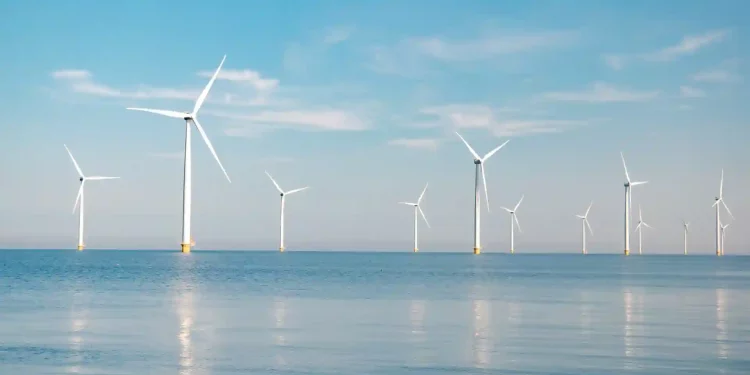The US government first auctioned the Wind Development rights off the coast of California. The auction was by and largely successful, with a whopping $757.1 million going into government coffers. Most of the bids came from European companies aiming to enter the offshore wind development market in the US.
What Exactly Is Offshore Wind Development?
Offshore wind turbines are placed on top of floating structures. Unlike fixed turbines, these offshore wind turbines float on the sea with measures to keep them within a certain limit.
Offshore floating wind turbines are more efficient than fixed ones because they get a greater wind speed. They are also larger, which further enhances their effectiveness. As per the data released by the US government, if all of the offshore wind resources available to the nation are leveraged, the nation will enjoy 13500 terawatt hours of energy generation. However, this is also true that it’s not viable to leverage all the resources.
Why This Auction Matters
There are wind development companies that are already leveraging the East Coast of the US to generate wind power. However, this is the first time the offshore wind industry will leverage the West Coast to implement floating wind development projects. Unlike the East Coast, which has shallower waters, the West Coast is more suitable for offshore wind development because of the presence of deep waters.
As of now, the north and central coast of California – totalling 373,267 acres, is going to be used for the deployment. The Interior Department’s Bureau of Ocean Energy Management is the one that oversees the auction and takes regulatory decisions.
The winners of the auction are European companies that are already working on offshore wind development projects on the East Coast. The notable among these winners are –
- Equinor, which is headquartered in Norway
- Denmark’s Copenhagen Infrastructure Partners
- France’s Engie and Portugal’s EDP, among others
Lower Price
Interestingly the companies had to pay lower prices than what they paid to get hold of the shallower waters. The lease they got to generate electricity through wind turbines in the deeper waters cost them $2028 per acre. Some of the companies had to pay as high as $9000 per acre to get the rights to deploy floating water turbines.
However, this low cost is nothing to be joyful of. There are risks associated with the deployment of offshore wind turbines – an emerging technology. Secondly, there is little to no regulatory support provided to these companies. Along with that, a slowing economy and a rising interest rate are further going to hurt the companies. To compensate for these negative aspects, the Bureau of Ocean Energy Management kept the prices of the lease low.
President Joe Biden is planning to develop a network of offshore wind turbines having a capacity of 30GW. The ultimate aim of approving this ambitious task is to lower the negative effects of climate change and to produce more jobs.



















